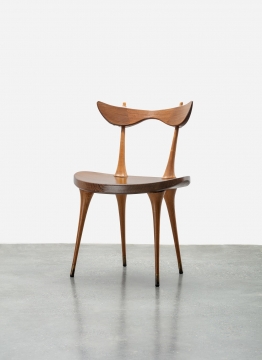Type:
Chair
Material / technique:
Brass, ash and palm tree
Type of acquisition:
Acquired by the Marie-Jeanne Dauchy Fund
Year of acquisition:
2020
Depository institution:
Design Museum Brussels
